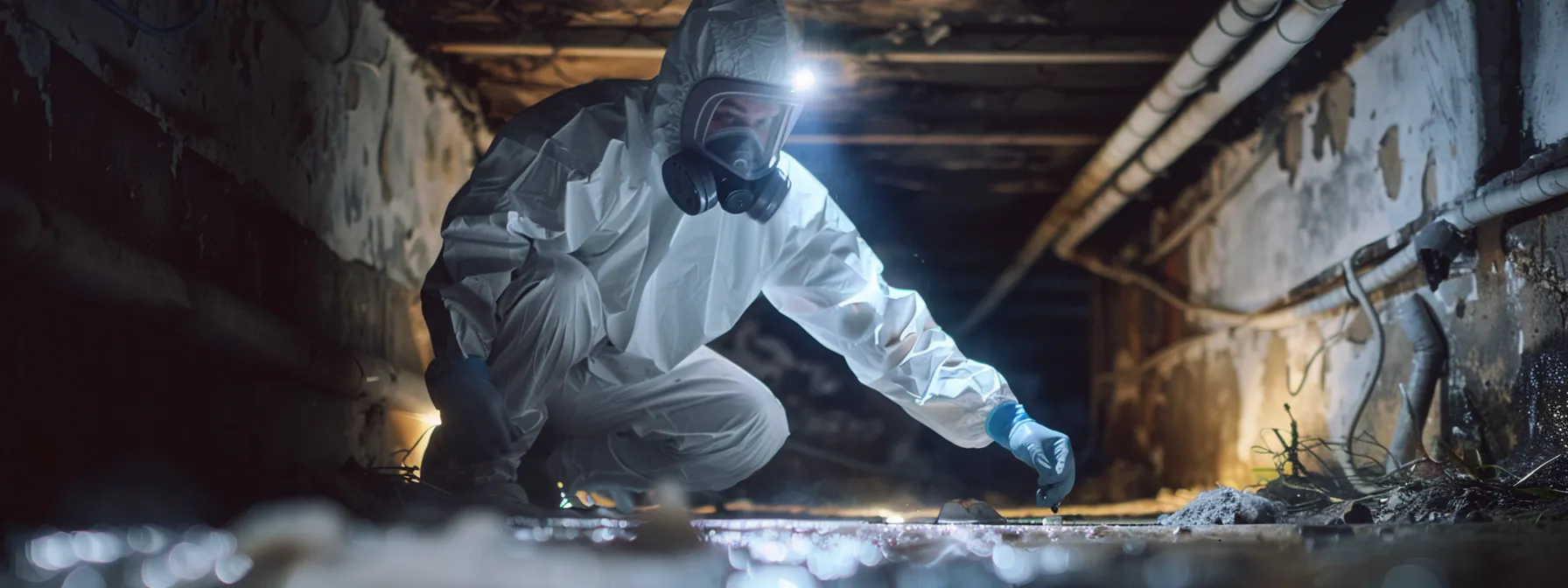Have you ever wondered if those pest control measures you take are as safe for your family as they are lethal for pests? Dealing with invaders like mosquitoes, rodents, and termites is a part of protecting your home, but safety should never be compromised in the process. This article shines a light on common household pest control risks and outlines how to blend safety with effectiveness. Learn to safeguard your loved ones and pets while maintaining a pest-free environment and discern when it’s time to call in professional help. With these insights, you’ll be equipped to combat pests without courting danger.
Key Takeaways
- Recognizing harmful chemicals in pest control protects families and pets
- Accurate pesticide application prevents health risks and pest reinfestation
- Early detection and proper management deter full-blown pest infestations
- Licensed professionals use safe, regulatory-compliant pest control methods
- Preparation and communication ensure effective and safe professional pest treatment
Recognize Common Household Pest Control Safety Risks
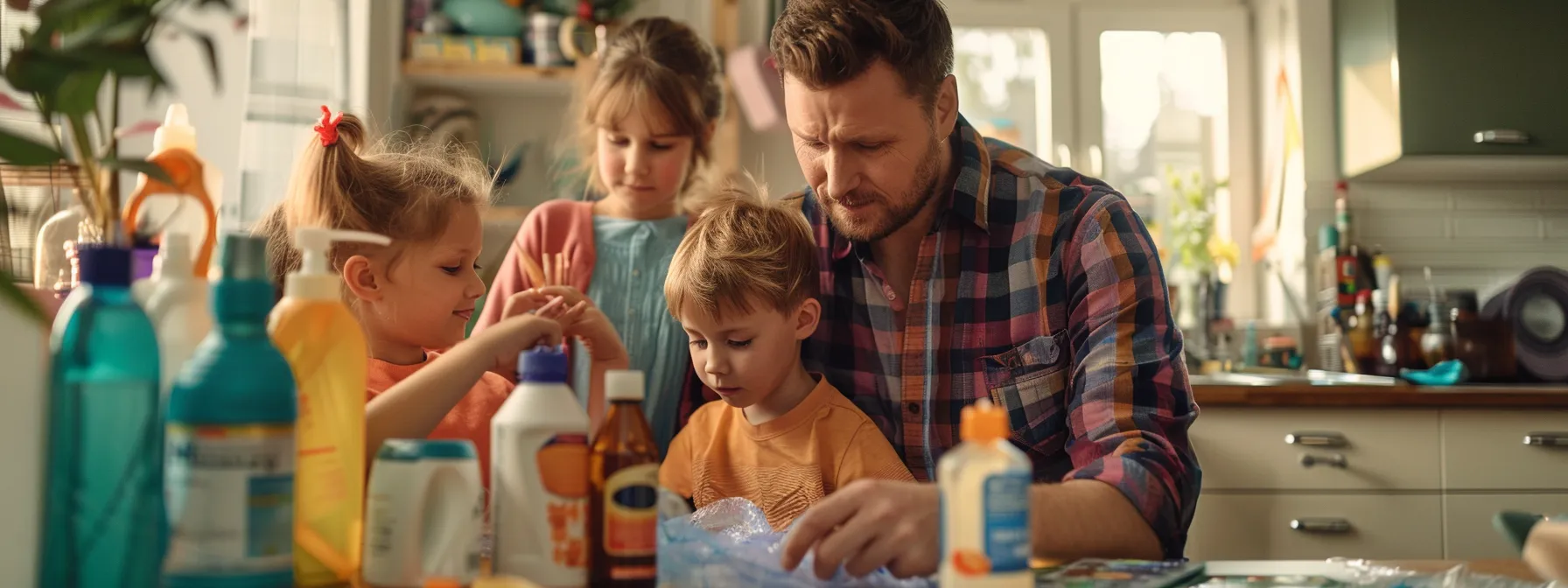
As homeowners, it’s crucial that we recognize the risks involved with pest control. Identifying harmful chemicals in insect and ant eradication products is vital for the safety of our families. Understanding the risks of improper pesticide application is just as important to prevent unintended consequences. Lastly, being aware of the common signs of cockroach and other pest infestations can help us address issues promptly and safely. These insights into pest control shed light on how to protect our homes while effectively managing infestation problems.
Identify Harmful Chemicals in Pest Control Products
In my role as a homeowner who has witnessed the complexity of pest infestations, I’ve learned the significance of recognizing harmful chemicals in pest control products. Particularly with wasp and rat control, pesticides often contain substances like pyrethroids and organophosphates, which can be toxic if misused. I believe that equipping myself with knowledge from entomology studies, especially ones focused in regions with high pest activity such as California, is essential for selecting safer, yet effective, pest management options.
The use of pesticides in the home requires strict attention to safety to prevent harmful exposure to our families and pets. I urge fellow homeowners to thoroughly read product labels and seek out low-risk pesticides that have been rigorously evaluated for residential use. It’s about finding a balance—the effectiveness of the product in eliminating pests, without compromising the well-being of those who inhabit the space. This approach allows for peace of mind, knowing that the safety measures I’m taking are as potent against pests as they are protective of my household.
Understand Risks of Improper Pesticide Application
Ensuring the correct use of pesticides is crucial, especially when dealing with common pests such as spiders or beetles in the home or bees and flies around the lawn. I’ve observed that improper application can cause these pests to scatter rather than be eliminated, reducing the effectiveness of pest control measures and potentially leading to reinfestation. Using too much of a pesticide or applying it incorrectly can also pose significant health risks to both humans and pets, highlighting the need for exact adherence to the guidelines provided on the product label.
In my experience, I’ve come to understand that the mishandling of pesticides not only affects the immediate area of application but can inadvertently harm beneficial insects or lead to the contamination of nearby water sources. This knowledge reinforces the importance of targeted applications, like when addressing a particular bee hive or tackling a fly outbreak, and always following environmentally responsible practices. It’s imperative to apply pest control solutions in a manner that is safe, precise, and mindful of the broader ecosystem we share.
Spot Common Pest Infestation Signs in Your Home
In my journey as a homeowner, I’ve come to realize that early detection of pests like mice or moths can prevent a full-blown infestation. For example, finding droppings in the kitchen or hearing the telltale scurrying noise within walls could be signs of mouse activity. It’s essential to act promptly at these initial indicators to engage nuisance wildlife management before the situation escalates.
Another aspect of vigilance involves observing bird nesting around the home, as they can damage structures and introduce mites or fleas. I make it a point to inspect for feathers or nesting materials in vents or eaves, understanding that these could herald further issues. As a customer seeking pest control solutions, I search for professionals who not only remove the nuisance but also offer guidance on preventive measures to keep my home secure and pest-free.
Choose Safe and Effective Pest Control Methods
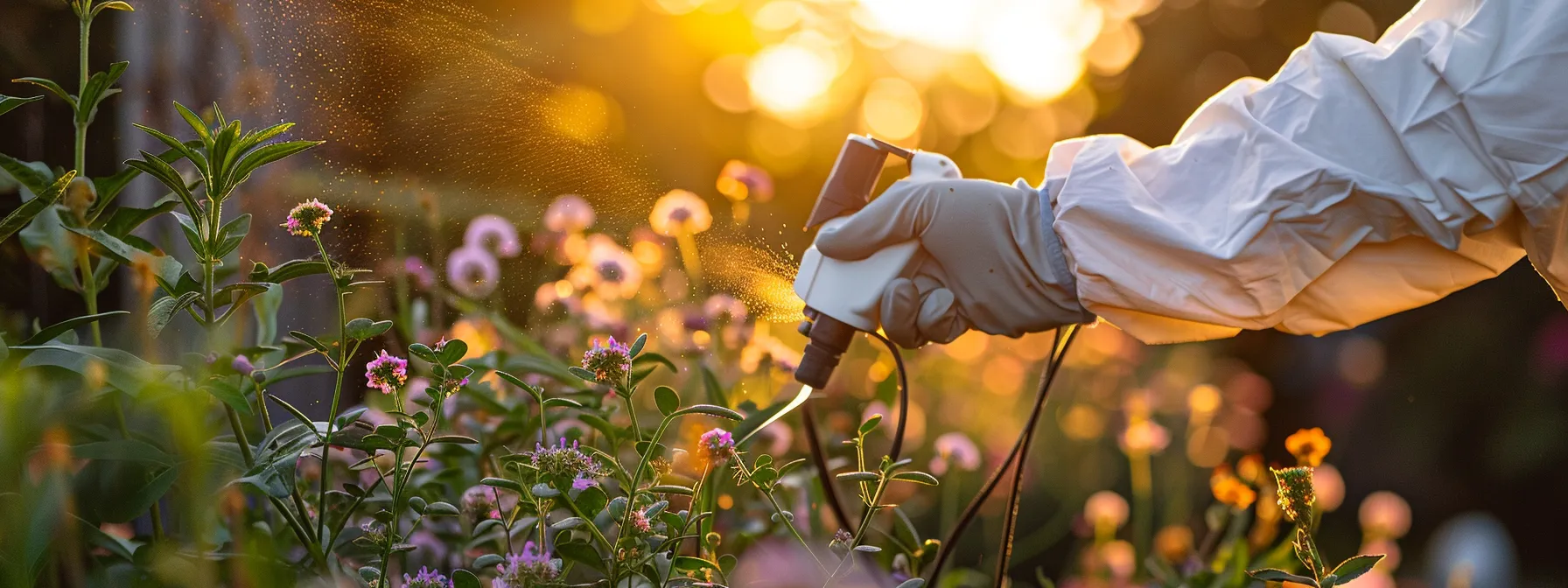
Choosing safe and effective pest control methods is imperative to ensure the health of my household and minimize environmental impact. I prioritize non-toxic pest control options, recognizing the hazards that poisons pose if not used correctly. It’s key to select EPA-approved pesticides specific to my zip code, assuring compliance with local regulations. I always read and adhere to pesticide labels carefully, understanding the importance of careful application. Environmental-friendly solutions are top of mind during inspections, aiming to address issues like tick infestations without undue harm to surrounding flora and fauna.
Use Non-Toxic Pest Control Methods
As someone deeply aware of the environmental impact of traditional pest treatment methods, I have come to value non-toxic approaches to handle common home invaders such as wildlife, silverfish, and fleas. Non-toxic methods prioritize the safety of my family and preserve the privacy of my home from chemical intrusion, ensuring the health of the ecosystem inside and around my dwelling. These methods include baits, traps, and using substances like diatomaceous earth and boric acid, which are less harmful to both humans and pets.
For instance, when faced with a flea problem, I opt for non-toxic alternatives like washing bedding in hot water and using natural flea deterrents like lemon spray or essential oils. These remedies offer peace of mind, knowing that while the pests are being effectively dealt with, my family’s wellbeing and the local wildlife remain unharmed. Moreover, embracing non-toxic pest control encourages a healthier living environment and contributes to the sustainability of our planet:
- Use natural flea deterrents to protect pets without harsh chemicals.
- Employ diatomaceous earth for the control of silverfish, ensuring no toxic residue remains.
- Set humane traps to gently relocate nuisance wildlife without harm.
Select EPA-Approved Pesticides for Home Use
When I look to select pesticides for home use, I prioritize those approved by the U.S. Environmental Protection Agency (EPA). This ensures the pest control technology I employ to manage pests is held to rigorous safety standards. Whether I am dealing with a termite control issue or a different pest problem, using EPA-approved products provides assurance that the methods are effective and have a reduced risk of harm to my family and the environment.
In my efforts to control pests responsibly, I regularly consult the EPA’s database for pesticides approved for use in residential settings, focusing on products designed for pest management within my specific locale. By integrating approved pesticides into my comprehensive termite control strategy, I not only address the current problem but also protect my home from future invasions. Affirmed by EPA approval, these pest control solutions foster a secure living space:
| Pest Control Method | Intended Use | EPA Approval |
|---|---|---|
| Termite Bait Stations | Termite control and prevention | Yes |
| Non-Repellent Liquid Pesticides | Termite barrier applications | Yes |
| General Insect Traps | Monitoring and capture of various insects | Yes |
Read and Follow Pesticide Labels Carefully
As a vigilant homeowner, I understand that correctly reading and following pesticide labels is critical when applying pest control treatments. These labels contain extensive information—from mixing instructions to application methods—that ensures the effective management of residential pest control. Misinterpretation or negligence can lead to improper use, which might cause harm instead of solving a pest issue; that’s why, for example, before a termite inspection, I always review the product specifications to apply treatments safely and correctly.
In my pursuit of both rodent control and general pest maintenance, I’ve learned that label instructions also specify protective measures to safeguard my family’s health. The precautions detail how to store and dispose of pesticides, pinpointing the dos and don’ts that are crucial to follow. Adhering to these guidelines secures my home from unwanted pests while preserving the safe haven I’ve worked hard to establish.
Consider Environmental-Friendly Pest Solutions
In my pursuit of a pest-free home, I’ve found that choosing environmental-friendly pest solutions is not just good for the earth but essential for long-term safety and sustainability. Instead of immediately resorting to harsh chemicals for bed bug control or wildlife management, I explore options like heat treatment or mechanical traps that minimize the use of toxic pesticides. These methods are effective, reduce the risk of exposure to harmful substances, and support a more balanced ecosystem around my property.
I’ve worked with pest control services that share my commitment to safe, responsible methods for dealing with termites and other common pests. Through their expertise, I’ve learned the value of integrated pest management strategies that rely on a combination of biological controls, environmental modifications, and the judicial use of pesticides. This holistic approach addresses pest issues at their source and aligns with my goal to maintain a home that’s both healthy for my family and less impactful on the natural world.
Use Protective Gear to Ensure Safe Pest Control

Ensuring safety during pest control, particularly in processes like termite treatment and extermination of rats, demands wearing appropriate personal protective equipment. It’s vital to maintain proper ventilation to safeguard against the fumes of pest control products. After service extermination, safely storing protective gear prevents contamination. These practices are fundamental in preserving the well-being of homeowners and protect against potential hazards associated with pest extermination.
Wear Appropriate Personal Protective Equipment
When I prepare for pest and termite treatment in my home, wearing the appropriate personal protective equipment (PPE) is non-negotiable. During the extermination process, I ensure to don gloves, masks, and sometimes even a protective suit, especially if the situation involves fumigation for rats or handling chemical treatments for millipede infestations. This protective gear is essential for avoiding direct contact with hazardous substances, safeguarding my health and that of my family while tackling pest issues.
Engaging an extermination expert has underscored the importance of PPE for me, particularly during high-risk procedures like extermination of termites. Experts arrive equipped with specialized PPE because they understand the repercussions of exposure to potent pest control agents. Their meticulous preparation has led me to mirror these safety precautions when managing smaller-scale pest issues myself, ensuring I’m well-protected against any potential harm that could arise during the pest eradication process.
Ensure Proper Ventilation During Pesticide Use
When I conduct pest management within my home, especially during fumigation processes for bed bugs or when eliminating a troublesome nest, I am acutely aware of the need for proper ventilation. This critical step ensures that any harmful chemicals released during pest eradication dissipate effectively, safeguarding my family from potential respiratory hazards associated with pesticides. I am meticulous in keeping doors and windows open, as well as using fans to circulate fresh air, thereby minimizing exposure to the fumes.
Moreover, I’ve learned from expert exterminators that proper ventilation not only protects humans but also pets who share our living spaces. Whether I’m applying a spray treatment for ants or a more involved fumigation for termites, I always confirm that the area is well-ventilated before, during, and after the treatment. It’s a non-negotiable practice that keeps safety at the forefront, ensuring that all rights reserved for healthy living are maintained in the process of keeping my home pest-free.
Store Protective Gear Safely After Application
After applying pesticides as part of integrated pest management in my home, I ensure that any protective gear I used, particularly if dealing with pests like the pervasive earwig in Wisconsin, is stored safely. Such equipment could harbor residues of pesticides which, if not handled correctly, pose a risk of accidental exposure or even disease transmission. I take the precaution of cleaning my gear according to the manufacturer’s guidelines and then storing it in a sealed container, away from areas where it could contaminate surfaces or come into contact with food, to prevent unintended consequences.
In my experience, especially when addressing pest issues at home, from the attic to the roof, attention to detail in the aftermath is as important as during the eradication process itself. Breathing masks, gloves, and suits used during pest management procedures contain substances that can harm humans and pets if neglected. Consequently, I designate a specific storage space, well-ventilated and out of reach, for these items. This careful approach ensures that I uphold safety standards, avoiding any potential disease vectors that can arise from mishandled protective gear after pest control activities.
Avoid Mistakes in DIY Pest Control at Home
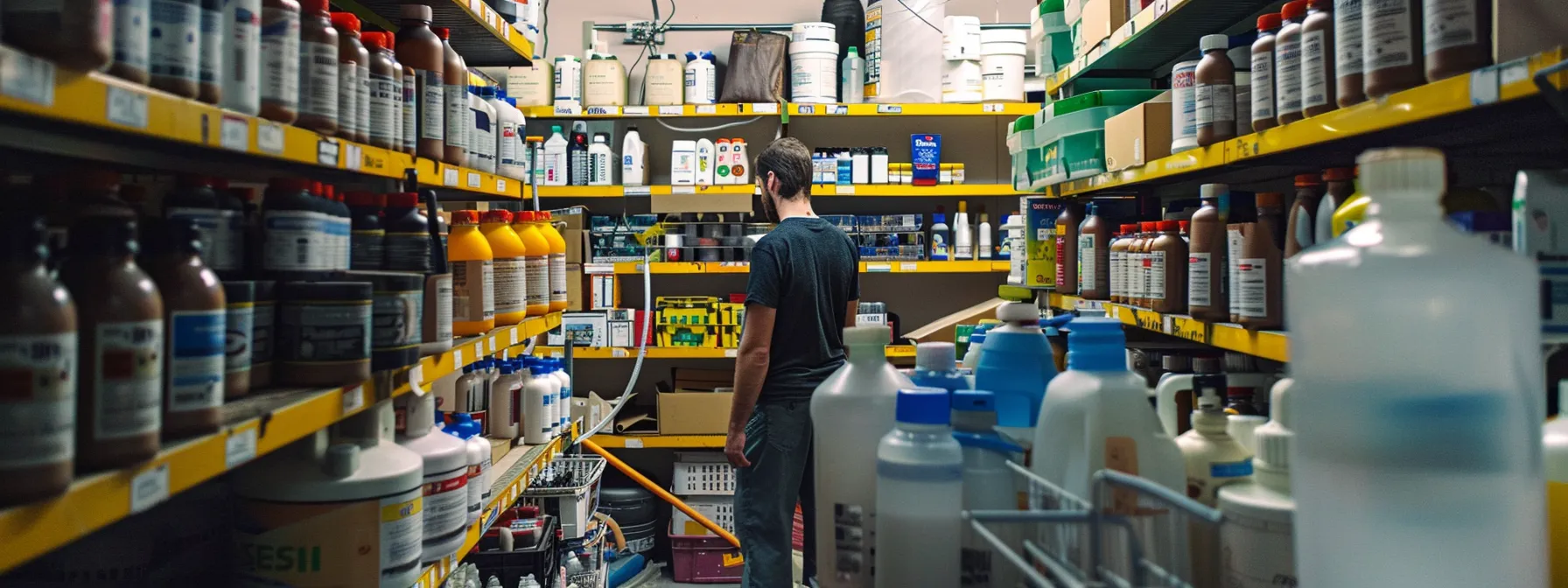
In tackling pest control, I’ve learned that mistakes in do-it-yourself methods can be avoidable yet hazardous. Preventing overuse of pesticides in your home, avoiding the mixing of various pest control products, keeping chemicals away from food and utensils, and disposing of pesticide containers responsibly are critical practices. My reflections here align with United States Environmental Protection Agency guidelines and draw on the best in customer service and pest management technology. This section ensures safe and efficient pest control, including tackling clothes moths, all while harnessing technology like heat treatments for optimal results.
Prevent Overuse of Pesticides in Your Home
In my endeavors to tackle home pest control, I’ve grown mindful of the need to avoid overusing pesticides, particularly when dealing with resilient species like the centipede in San Antonio. I’ve come to understand that using more product doesn’t always equate to better results and can lead to adverse effects on water sources and non-target species essential for agriculture. Prudent application, following manufacturer’s directions, allows for sufficient pest management without the risks of over saturation.
My hands-on experience has taught me that the accumulation of pesticides in the home can have lasting negative impacts. When addressing pest concerns, I make it a habit to only mix or apply as much as required for the specific area or issue at hand. I avoid leaving residue that can contaminate surfaces or harm beneficial insects that contribute to a balanced ecosystem. Adopting a cautious approach ensures safe use and upholds the integrity of my home environment.
| Pest Control Task | Recommended Amount | Precautionary Measures |
|---|---|---|
| Centipede treatment | As per label instructions | Protect waterways from contamination |
| General pest spray | Only in affected areas | Prevent residue build-up on surfaces |
| Garden pest deterrent | Minimum effective dosage | Preserve beneficial species for agriculture |
Avoid Mixing Different Pest Control Products
In my efforts to secure my home against carpenter ants common in North Carolina, I’ve learned that mixing different pest control products is a mistake that can lead to dangerous chemical reactions. As an expert in DIY home care, I caution against the temptation to combine treatments in hope of a stronger effect. The resulting mixture can be harmful to the environment and ineffective against pests like the elusive scorpion.
For instance, living in Los Angeles, where scorpion populations may be prevalent, it’s critical to use specialized products designed to target these arachnids effectively. Mixing different chemicals not only complicates pest control efforts but also may neutralize the intended effects of each product. Here’s a practical guide to help safeguard homes against harmful combinations:
| Pest Control Challenge | Appropriate Product | Unsafe Combination |
|---|---|---|
| Carpenter Ant Infestation | Ant bait stations | Do not mix with liquid insecticides |
| Scorpion Prevention | Scorpion-specific pesticides | Avoid adding general insect repellents |
Keep Chemicals Away From Food and Utensils
In my own home in Dallas, I’ve become particularly vigilant about keeping pesticides away from where we store our food and utensils, a practice I’ve found crucial when dealing with pests such as the honey bee whose habitats might be nearby. I store all chemical products in lockable cabinets, far removed from the kitchen, to prevent any contamination. This separation is especially important because chemicals can easily taint food surfaces and utensils, turning a simple pest control solution into a potential health hazard.
During a recent encounter with dermestidae beetles, a common issue in Missouri households, I made sure to use treatments in designated areas only and never where we prepare or consume food. Ensuring that chemicals are applied with this level of caution minimizes the risk of accidental ingestion, which is paramount for the health and safety of my family. It’s a straightforward yet impactful measure that can easily be overlooked in the eagerness to address a pest problem.
Dispose of Pesticide Containers Responsibly
As a diligent homeowner in Minnesota, where the American cockroach can be a common invader, I’ve come to understand the importance of proper disposal of pesticide containers. Ensuring that these containers do not contaminate the environment or pose a risk to human health is crucial. I always follow my community’s guidelines for hazardous waste disposal, making sure that I never simply throw these containers in the trash or down the drain, as this can lead to water supply contamination.
In South Carolina, dealing with pests on our plush carpets can often lead to the use of various pest control methods; nevertheless, the leftover containers must be dealt with responsibly. For me in New Jersey, I take advantage of designated drop-off days for hazardous waste to ensure all my used pesticide containers are handled correctly. This not only keeps my family safe but also contributes to our collective responsibility in preserving the environment:
| State | Hazardous Waste Solution | Drop-off Days |
|---|---|---|
| Minnesota | Local waste facility | Varies by county |
| South Carolina | Designated disposal services | Monthly |
| New Jersey | Community hazardous waste events | Quarterly |
Protect Children and Pets During Pest Control Treatments
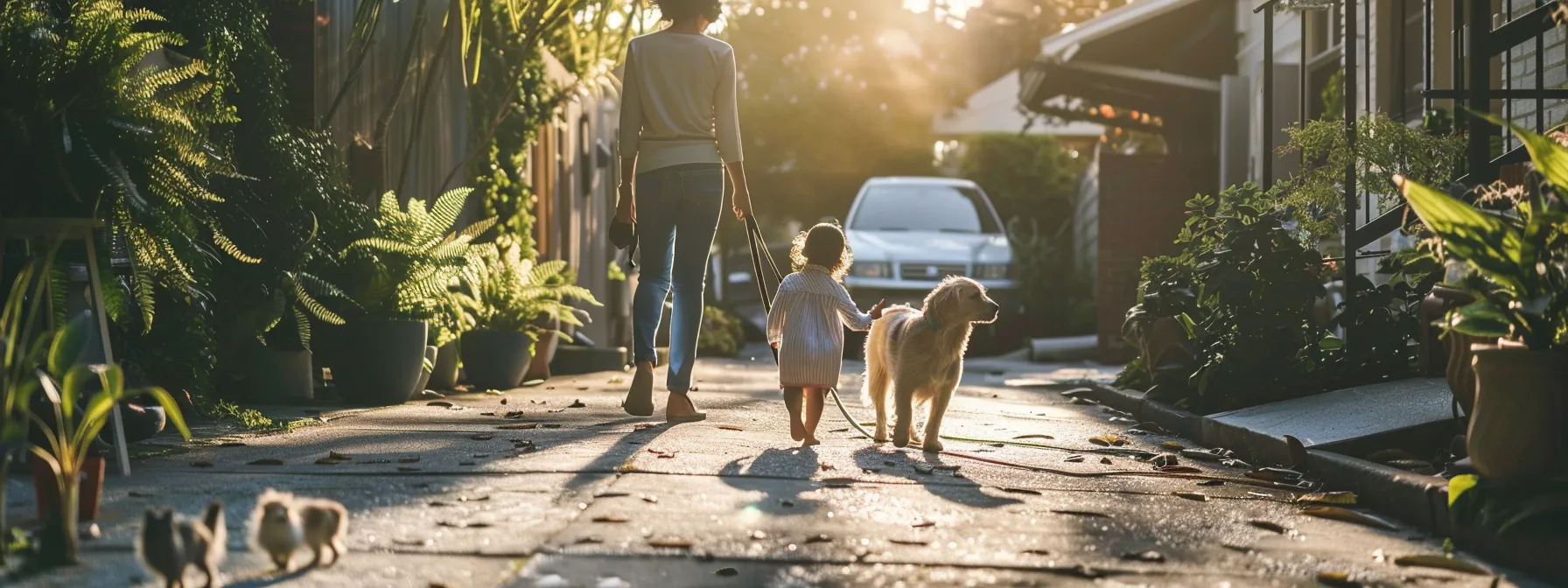
As a responsible homeowner, I place the safety of my children and pets at the forefront while performing pest control treatments. In areas like Utah, Texas, Illinois, Louisiana, and San Diego, ensuring that kids and animals remain clear of treated zones is paramount. I select pest control options that are harmless to my family’s younger members and furry companions. Storing hazardous materials securely and imparting pest control safety education within my household are practices I prioritize. These forthcoming sections will share actionable advice on maintaining a safe environment during pest management.
Keep Kids and Animals Out of Treated Areas
As a homeowner, I know the importance of keeping children and pets away from areas where pest control treatments have been applied. This is particularly crucial when dealing with pests like the German cockroach, whose presence in places like Connecticut can prompt the use of pesticides. I opt for environmentally friendly options which greatly reduce, but don’t completely eliminate, the need to separate kids and animals from treated zones. The biology of these pests, including their egg laying habits, means keeping living spaces contaminant-free is essential for health.
On the occasion a pest control treatment is required in my home, I take the necessary precautions to secure the area. I’ll create a buffer zone that children and pets cannot cross, ensuring their safety from exposure to any chemicals used. Adhering to these boundaries is a simple yet effective strategy to prevent unwanted contact with the pesticides. Understanding these safety measures is a key part of responsible pest management:
| Pest Problem | Treatment Area | Safety Precautions |
|---|---|---|
| German Cockroach Infestation | Kitchen and Bathrooms | Create a physical barrier to keep kids and pets out |
| Environmentally Friendly Alternatives | Varies | Monitor treated areas to ensure no direct contact occurs |
Use Child- And Pet-Friendly Pest Control Options
In my home, I prioritize the use of child- and pet-friendly pest control options that incorporate trapping methods. These humane approaches allow me to manage pests effectively without introducing harsh chemicals into the environment where my children play and my pets roam. For example, using fruit as bait in traps is a safe, non-toxic way to attract and capture pests that may be lurking in the garden or near lumber around my Georgia property.
Ensuring the safety of my family involves choosing pest control solutions that are specifically designed to be non-harmful to domestic animals and children. By using traps in strategic locations, such as the garden or woodpile, I can tackle pest issues without fear of accidental ingestion of pesticides by my loved ones. The action of setting and checking these traps also serves as a practical example of responsible pest management:
| Location | Trap Type | Bait Used |
|---|---|---|
| Garden | Non-toxic bait trap | Fruit |
| Woodpile | Enclosed snap trap | Lumber-scented lure |
| Home Interior | Electronic trap | Natural attractants |
Secure Hazardous Materials Away From Children
In my home, securing hazardous pest control materials far from the reach of curious hands is a practice I take seriously, particularly after learning about the aggressive nature of hornets in Colorado. When I discover nests that need addressing, I store any chemical repellents or traps securely, mindful that kids might stumble upon these dangers unwittingly. This precaution is paramount because it not only guards against accidental poisonings but also instills a sense of security that my home remains a safe haven for my family.
Moreover, in Maryland where wildlife, including potentially dangerous animals, frequents residential areas, it’s essential to keep hazardous pest control materials well out of pets’ reach as well. Encountering a hornet or managing pests common in Tennessee demands vigilance—ensuring that dangerous chemicals are locked away reduces the risk to both children and pets. I personally conduct regular checks to guarantee that all pest control elements are stored safely, reinforcing a protective environment at home.
Educate Family on Pest Control Safety Measures
In my home, I take the time to educate my family on the various safety measures necessary for pest control, underscoring it as a key element of our privacy policy to protect every member’s well-being. For instance, in Indiana, where carpenter bees can compromise wooden structures, I inform my family about the proper handling and storage of pesticides. Conveying the potential risks helps prevent mishaps, and emphasizing the importance of personal safety keeps everyone informed and vigilant.
Moreover, living in Virginia, where diverse pest populations are prevalent, I’ve made it a practice to include even the youngest family members in discussions about safely navigating areas treated for pest control. This might cover guidelines such as steering clear of baits or sprays. In settings like Rhode Island, where homes and landscapes offer numerous hiding spots for pests, sharing knowledge becomes an integral part of our strategy to keep the household safe. Engaging everyone in this learning process ensures a consistently high level of awareness:
- Identifying signs of pest activity to report and address promptly
- Reviewing instructions on pest control product labels together
- Understanding and adhering to the protocols stated in the privacy policy concerning pest control methods
Know When to Hire a Professional Pest Control Service
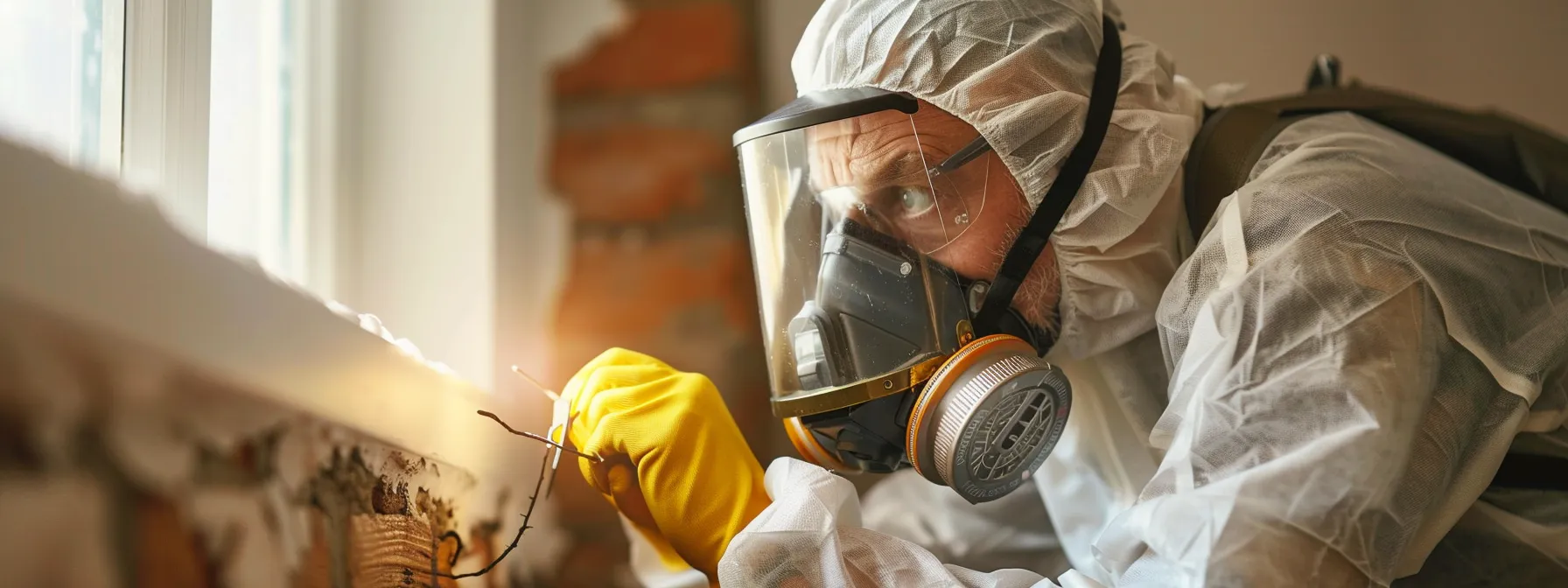
Occasionally, as a homeowner, I face pest control challenges that transcend the scope of DIY tactics – this is when recognizing the necessity for professional help becomes essential. Whether confronting stubborn insecticide-resistant thrips in Ohio, the best termite varieties in Arizona, or other persistent pests in Iowa, choosing a licensed pest control expert is a critical step toward safety and efficacy. It’s crucial to understand how to prepare my home for professional treatment and familiarize myself with the processes employed by specialists. This section intends to guide you through the pivotal decisions and preparations for expert intervention.
Recognize Situations Requiring Professional Help
Identifying when to seek professional help is central to managing pest control safely and effectively at home. An infestation of rats, for example, can rapidly escalate, causing significant health and structural risks that go beyond the avenues of DIY measures. When telltale signs such as persistent rodent noises, visible droppings, or damage to wires and insulation emerge despite preliminary efforts to control the problem, it’s time to call in experts. These professionals have the tools, knowledge, and experience to tackle challenging infestations with precision.
In my role as a homeowner, I’ve faced times where the severity and scope of a pest problem outstripped my ability to manage it safely on my own. It’s essential to recognize such scenarios promptly to protect both the household and the structural integrity of my property. Here are some key factors to consider when deciding to hire a professional pest control service:
- The size of the infestation is large or spreading quickly.
- There is a recurrent issue despite using over-the-counter solutions.
- Pests like rats present health hazards that require specialized interventions.
- The pest problem is in hard-to-reach areas where incorrect treatment could cause more harm.
Choose a Licensed Pest Control Expert
In my search to address a complex pest issue effectively, I’ve learned that choosing a licensed pest control expert is indispensable. These professionals possess a thorough understanding of pest habits and the safest, most effective mitigation strategies. They’re equipped with advanced tools and pesticides that are less likely to be available to the average consumer, offering solutions that go beyond what can be achieved with over-the-counter products.
From my experience, selecting a licensed professional provides the assurance that the pest management strategy implemented in my home is not only efficient but also compliant with safety regulations. These experts are trained to handle and apply treatments in a way that minimizes risk to my family and the environment, which is a responsibility I take seriously. Their expertise becomes especially valuable when faced with pests that pose significant health risks or when infestations have reached critical levels requiring immediate and professional attention.
Prepare Your Home for Professional Treatment
As I prepare my home for professional pest control treatment, I start by clearing the area of personal items and furniture to ensure the expert has unimpeded access to all potentially infested zones. It’s about creating an environment conducive to thorough inspection and treatment, which is vital for addressing hidden nests and minimizing reinfestation risks. Clearing the space also provides a safer environment for the professional to work, reducing the likelihood of accidents or overspray on belongings.
I also prioritize informing the pest control service of any pets or sensitive areas in my home, ensuring they tailor their treatment plan accordingly. Communicating these details in advance allows the professional to avoid using harmful chemicals in certain spaces or to plan for pet-safe treatment options. This preparatory step is not just about pest elimination; it’s fundamentally about safeguarding the health of my household and ensuring that the treatment process goes smoothly, without any harm to the vulnerable members of my family.
Understand Professional Pest Control Processes
Understanding the professional pest control processes is fundamental when dealing with complex pest issues. Licensed experts typically follow an integrated pest management (IPM) approach, which includes a thorough inspection of the property, identification of the pests and their harborage sites, and the development of a targeted treatment plan. This comprehensive process ensures pests are not only eliminated but also that preventive measures are put in place to deter future infestations.
Having witnessed professional pest control in action, I can attest to the meticulous nature of their work. After the initial assessment and treatment execution, professionals monitor and evaluate the effectiveness of their interventions, making adjustments as necessary. They prioritize safety, using methods that mitigate potential risks to humans and pets:
- Experts use protective gear and equip the treatment area to prevent exposure.
- They apply environmentally-safe products to protect the surrounding ecosystem.
- Professionals communicate clear post-treatment instructions to ensure continued safety.
Frequently Asked Questions
What are the risks of household pest control?
Household pest control can expose residents to harmful chemicals, potentially aggravate allergies, and be toxic to pets and beneficial insects, necessitating cautious application and adherence to safety guidelines.
How do I select safe pest control methods?
When choosing safe pest control methods, opt for eco-friendly products, seek professional advice, and research each method’s environmental impact and health risks to humans and pets.
What protective gear is needed for pest control?
Effective pest control requires protective gear such as gloves, respirators, eye protection, and long-sleeved clothing to ensure safety from chemicals and pests.
What common DIY pest control errors should I avoid?
One common mistake in DIY pest control is neglecting to identify the specific pest before treatment, resulting in ineffective solutions and potential harm to non-target species. Always research and apply targeted methods for best results.
When is it necessary to call a professional for pest control?
Calling a pest control professional is necessary when you have a persistent infestation, signs of damage, allergic reactions, or the pests pose a health risk.
Conclusion
Pest control safety is paramount for every homeowner, safeguarding families from the harmful effects of toxic chemicals and ensuring a secure home environment. Recognizing harmful substances, applying pesticides correctly, and discerning when professional intervention is needed are critical steps to effective and safe pest management. By embracing non-toxic methods and following EPA guidelines, homeowners can protect both their loved ones and the ecosystem. Ultimately, informed and cautious pest control not only resolves infestations but also upholds the well-being of all household inhabitants, sustaining a healthy living space.

